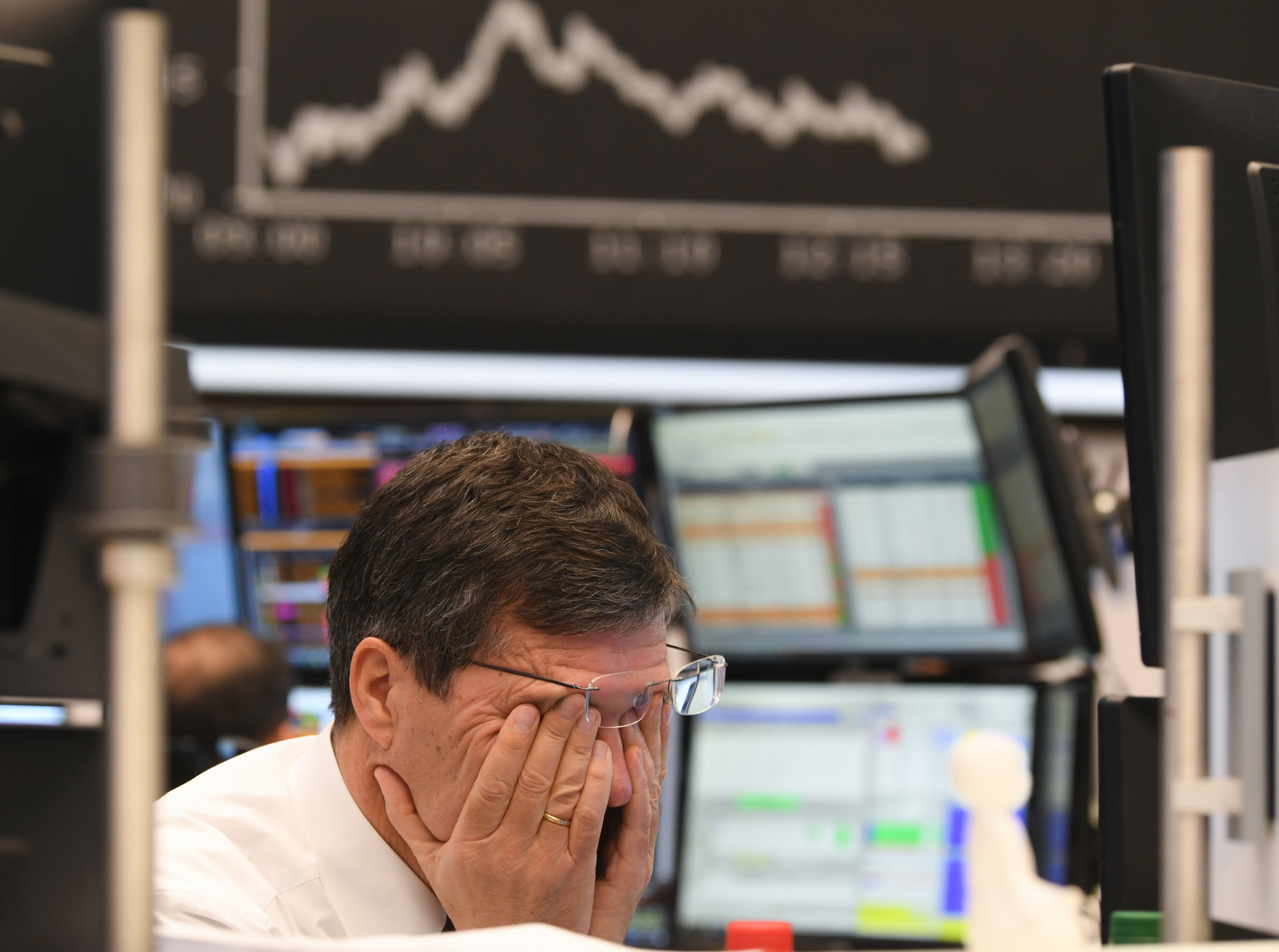On Thursday, January 28, the Russian currency weakens on the Moscow Exchange.
At the beginning of trading, the dollar rose by 0.9% and for the first time since November 30 reached 76.5 rubles.
At the same time, the euro rate grew by 0.7% - up to 92.5 rubles.
The last time a similar indicator could be observed on November 3.
The official exchange rate of the Central Bank on January 29 was set at 76.19 rubles per dollar and 92.13 rubles per euro.
The Russian securities market also demonstrates negative dynamics.
During the trading session, the Moscow Exchange index fell by more than 1%, to 3307 points - the lowest level since January 5.
At the same time, the RTS index fell by 2% - to 1365 points.
The value was the lowest since December 24.
Experts interviewed by RT largely attribute the drop in the price of the national currency and Russian shares to the deterioration of sentiment in the global financial market.
Thus, stock quotes on foreign exchanges are mainly decreasing on the general wave of investor pessimism.
Following the Asian session, the Shanghai Stock Exchange SSE Composite Index dropped 1.9%, while the Japanese Nikkei dropped 1.5%.
At the same time, during trading on European grounds, the French CAC 40 index fell by 1.5%, the English FTSE 100 - by 2%, and the German DAX index - by 2.3%.
American stock quotes showed similar dynamics yesterday.
Thus, at the end of trading on January 27, the Dow Jones industrial index fell 2%, and the corporate S&P 500 and high-tech NASDAQ - by 2.6%.
According to experts, global investors are still alarmed by the increase in the number of cases of coronavirus.
According to Johns Hopkins University, to date, the number of detected cases of COVID-19 in the world has come close to 101 million. Against this background, the authorities of a number of states are forced to introduce repeated lockdowns.
“It should be noted that the markets are now too overbought and become not only very sensitive to existing problems and risks, but may also decline simply due to the lack of new reasons for growth.
Against this background, the ruble is also moving down in line with the global trend, "Dmitry Babin, an expert on the BCS World of Investments stock market, explained in an interview with RT.
In addition, the pressures on the global stock market were made by the statements of the head of the US Federal Reserve, Jerome Powell.
The day before, the head of the American regulator announced a slowdown in the recovery of the US economy.
“We are still very far from complete recovery.
As a result of the consequences of the pandemic
, about 9 million people remain
unemployed (in the USA -
RT
).
The same number of citizens who lost their jobs can be observed even at the peak of the global financial crisis during the Great Depression, ”Powell said during a press conference.
World investors reacted negatively to the pessimistic rhetoric of the head of the Federal Reserve and began to massively sell off securities and risky assets, including the ruble.
Vladislav Antonov, an analyst at the Alpari information and analytical center, told RT about this.
“Powell has painted a rather bleak picture of the economy.
According to him, the economic path ahead remains highly uncertain due to a new wave of growth in infections, hospitalizations and deaths from COVID-19.
His statements collapsed in American stock indices and led to an increase in the dollar rate, "Antonov explained.
globallookpress.com
© Arne Dedert / dpa
According to analysts, during the trading on Thursday, a certain pressure on the ruble was exerted by the decline in oil prices.
So, on January 28, energy raw materials of the Brent benchmark on the ICE exchange in London fell in price by almost 1.5% - to $ 55 per barrel.
At the same time, the cost of oil in rubles is still at levels that are comfortable for the Russian budget, Dmitry Babin believes.
Against this background, the analyst does not expect a significant weakening of the national currency in the near future.
“Now the price of a barrel of oil exceeds 4.2 thousand rubles, while at the end of last year it was in the range of 3.5-3.9 thousand rubles.
Accordingly, now the oil factor still remains on the side of the Russian currency and leaves room for the ruble to strengthen, ”Babin explained.
According to the expert's forecast, in the absence of external economic shocks and new geopolitical risks until the end of winter, the dollar rate will remain in the range of 75-78 rubles, and the euro rate - around 90-93 rubles.
However, analysts interviewed by RT do not exclude the return of the dollar exchange rate to below 75 rudders in the near future.
“Although from a technical point of view, the rate of the American currency against the Russian one can still rise to 77.5 rubles, nevertheless, I believe that the observed growth of the indicator is of a short-term nature.
On the horizon of a week, the dollar rate may return to the range of 72-74 rubles, "said Georgy Vaschenko, head of the department for trading operations in the Russian stock market at Freedom Finance Investment Company, to RT.

